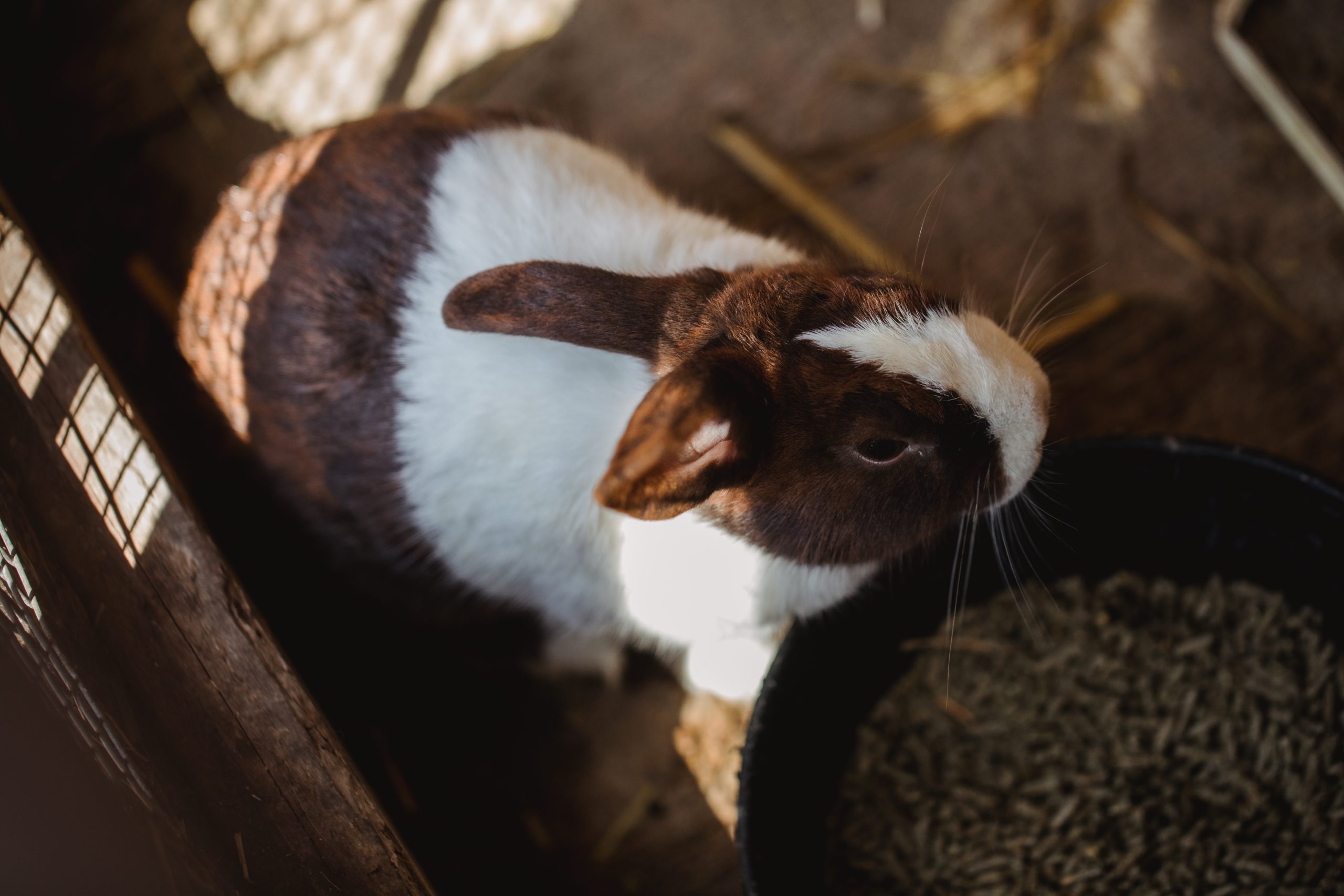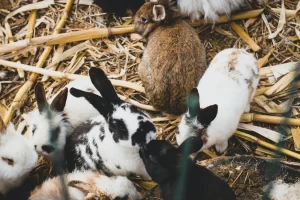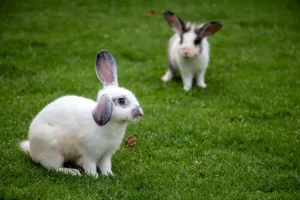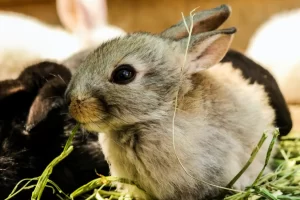You’re committed to keeping your beloved rabbits healthy and happy, and preventing E Cuniculi is a crucial part of that.
This article will guide you through the steps to ensure your furry friends stay safe from this potentially dangerous disease.
By understanding its symptoms, maintaining a clean environment, practicing proper hygiene, and seeking veterinary care, you can effectively prevent E Cuniculi and provide your rabbits with the best possible care.
Let’s dive in and discover how to protect your furry companions!
In This Article
- 1 Key Takeaways
- 2 Understanding E Cuniculi in Rabbits
- 3 Recognizing the Symptoms of E Cuniculi
- 4 Creating a Clean and Hygienic Environment
- 5 Implementing Proper Hygiene Practices
- 6 Seeking Veterinary Care and Treatment Options
- 7 Frequently Asked Questions
- 7.1 Can E Cuniculi Be Transmitted From Rabbits to Humans?
- 7.2 Are There Any Specific Breeds of Rabbits That Are More Susceptible to E Cuniculi?
- 7.3 Can Rabbits Be Vaccinated Against E Cuniculi?
- 7.4 Is There a Way to Prevent E Cuniculi From Spreading Among a Group of Rabbits?
- 7.5 How Long Does It Take for a Rabbit to Recover From E Cuniculi With Proper Treatment?
- 8 Conclusion
Key Takeaways
- E Cuniculi can be transmitted through contact with infected urine, contaminated food or water, or from mother to offspring.
- The parasite can remain dormant in the body for months or even years before causing symptoms.
- Good hygiene practices, clean living areas, and a balanced diet can help prevent transmission.
- Early detection of symptoms is crucial for prompt treatment and better outcomes.
Understanding E Cuniculi in Rabbits
You should educate yourself about E Cuniculi in rabbits to better understand the disease. E Cuniculi is a parasitic infection caused by the microsporidian parasite Encephalitozoon cuniculi. It primarily affects rabbits but can also infect other animals, including humans. Understanding this disease is crucial to prevent its transmission and minimize potential risks.
E Cuniculi can be transmitted through contact with infected urine, contaminated food or water, or even from mother to offspring. The parasite can remain dormant in the body for months or even years before causing symptoms. These symptoms can vary and include head tilt, loss of coordination, seizures, and kidney problems.
To prevent transmission, it’s essential to maintain good hygiene practices, such as regularly cleaning and disinfecting your rabbit’s living area. Ensure that your rabbit has access to clean and uncontaminated water and feed them a balanced diet to maintain a strong immune system. Regular veterinary check-ups are also important to detect and treat E Cuniculi early.
Recognizing the Symptoms of E Cuniculi
It is important to understand and recognize the symptoms of E Cuniculi in rabbits, as early detection can lead to prompt treatment and better outcomes.
E Cuniculi, also known as Encephalitozoon cuniculi, is a common parasite that affects rabbits, causing a range of symptoms including head tilt, loss of balance, seizures, and urinary problems.
Diagnosing E Cuniculi can be challenging, as the symptoms can be similar to other health issues. However, a veterinarian can perform various tests such as blood tests, urine analysis, and imaging to confirm the presence of the parasite.
Once diagnosed, there are treatment options available for E Cuniculi. Medications such as fenbendazole and supportive care can help manage the symptoms and improve the rabbit’s quality of life.
It’s crucial to consult with a veterinarian to determine the most appropriate treatment plan for your rabbit.
Creating a Clean and Hygienic Environment
To maintain a clean and hygienic environment for your rabbit, regularly clean their cage and provide fresh bedding. Cleaning techniques and prevention measures are crucial in preventing the spread of diseases and ensuring the well-being of your furry friend. Here are some key steps to follow:
- Cleaning Techniques:
- Remove any uneaten food and soiled bedding daily.
- Thoroughly clean the cage at least once a week using a pet-safe disinfectant.
- Wash and sanitize food and water bowls regularly.
- Clean litter boxes and litter trays daily to prevent odor and maintain hygiene.
- Prevention Measures:
- Ensure proper ventilation in the rabbit’s living space.
- Regularly check for signs of illness and consult a veterinarian if necessary.
- Provide a balanced diet and fresh water to boost the rabbit’s immune system.
- Avoid overcrowding and maintain appropriate spacing between rabbit cages.
Creating a clean and hygienic environment is essential for your rabbit’s health and happiness. By following these cleaning techniques and prevention measures, you’re taking proactive steps to ensure your rabbit’s well-being.
Implementing Proper Hygiene Practices
Regularly washing your hands with soap and water is crucial for implementing proper hygiene practices. When it comes to caring for rabbits, maintaining good hygiene is of utmost importance.
One key aspect of this is regular grooming. Regularly brushing your rabbit’s fur not only helps keep it clean and free of mats, but it also promotes good circulation and helps prevent hairballs. Additionally, trimming their nails regularly is essential to prevent overgrowth and discomfort.
Another important aspect of hygiene is the proper disposal of rabbit waste. It’s important to clean their litter boxes daily and dispose of the waste in a responsible manner. This helps prevent the buildup of bacteria and odors, ensuring a clean and safe environment for both you and your rabbit.
Seeking Veterinary Care and Treatment Options
Have you considered reaching out to a veterinarian to discuss available treatment options for your rabbit’s health concerns? Seeking veterinary advice is crucial in ensuring the well-being of your furry friend. When it comes to medication options, it’s important to consult a professional who can provide the best guidance based on your rabbit’s specific needs. To help you understand the importance of veterinary care, here is a table outlining common health concerns in rabbits and the corresponding treatment options:
| Health Concern | Treatment Options |
|---|---|
| Dental Problems | Dental examination and possible tooth extraction |
| Respiratory Issues | Antibiotics, nebulization, and supportive care |
| Gastrointestinal Problems | Medications to treat diarrhea, gut motility stimulants |
| Skin Conditions | Topical creams, antibiotics, and antifungal medications |
| Parasite Infestation | Deworming medications, flea and tick treatments |
Frequently Asked Questions
Can E Cuniculi Be Transmitted From Rabbits to Humans?
E Cuniculi can be transmitted from rabbits to humans, posing a transmission risk and zoonotic potential. It’s important to be aware of this potential when handling rabbits to prevent any potential health issues.
Are There Any Specific Breeds of Rabbits That Are More Susceptible to E Cuniculi?
To protect rabbits from E Cuniculi, it’s important to know which breeds are more susceptible. Some specific breeds, like the Dwarf Hotot and English Lop, may be more vulnerable. Take extra precautions with these breeds to keep them safe and healthy.
Can Rabbits Be Vaccinated Against E Cuniculi?
Yes, rabbits can be vaccinated against e cuniculi. Vaccination is an important part of prevention. Talk to your veterinarian about the best vaccination schedule for your rabbit to keep them protected.
Is There a Way to Prevent E Cuniculi From Spreading Among a Group of Rabbits?
To prevent the spread of E Cuniculi among your rabbits, you should focus on managing the disease in your rabbit colonies. By implementing good hygiene practices, regular veterinary check-ups, and isolating infected rabbits, you can prevent transmission and protect the health of your rabbits.
How Long Does It Take for a Rabbit to Recover From E Cuniculi With Proper Treatment?
With proper treatment, a rabbit can recover from E Cuniculi within a few weeks. The effectiveness of the treatment and the overall recovery time can vary depending on the severity of the infection and the individual rabbit’s response to treatment.
Conclusion
In conclusion, by understanding the symptoms of E Cuniculi, creating a clean environment, practicing proper hygiene, and seeking veterinary care, you can effectively prevent this disease in rabbits.
Remember, prevention is key to ensuring the health and well-being of your furry friends. By taking these proactive measures, you can provide a safe and happy life for your rabbits, free from the risks of E Cuniculi.





